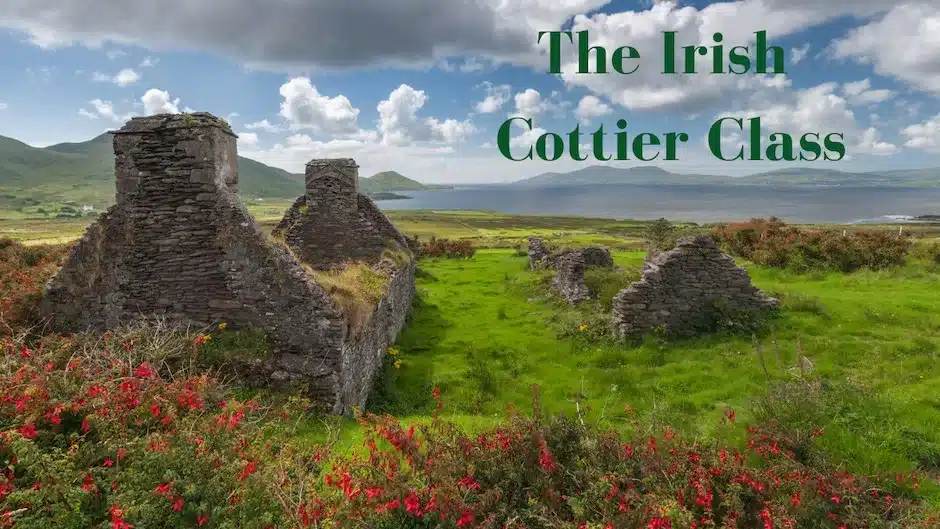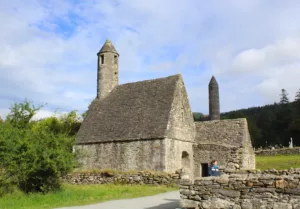How the Irish Famine Wiped out a Whole Group of People
The Irish famine had a profound effect on a large group of people in Ireland who often went unrecorded. While some records of Irish ancestors are lost due to incidents like fires, many times no records were made in the first place.

I’m often contacted by readers who are surprised that so few records exist for their Irish ancestors. Sometimes, the records have been lost in fires and so on – but sometimes the reason is because a record was never taken in the first place. Today, I’d like to chat about a substantial group of people who lived “under the radar” when it came to record-keeping of all kinds in Ireland and how the Irish famine all but drove them to extinction.
Did Your Ancestors Belong to this Group back in Ireland?
If you go back to the 1800s in Ireland, there were just a few individuals owning land – the majority of people in the countryside were tenant farmers. However, there was also a substantial number of people without any tenancy rights. This group of people has come to be known as the “Cottier” group . Today we’ll have a look at cottiers in one particular county – County Cavan. We will look at how they were all but extinguished by the horrific events of the multi-year famine in the mid 1840s that we know today as the “Great Famine” or in Irish, “An Gorta Mór”.
I was reading an article recently by Ciarán O’Reilly of Maynooth. He spoke of the “Cottier” class that was prevalent in Ireland before the great Irish famine of the 1840s. The “cottier” class (from the word cottage) were a landless form of farm labourer who relied on receiving a patch of land from a more established tenant farmer in exchange for services for a season (often 200 days of labour). The Cottier (and his family) were given land typically on an 11 month basis, thereby bypassing their legal rights to tenantry. Sometimes, a cottage already existed on the land that the cottier could use, but more often a simple cottage was constructed of local stone and sods. This was a temporary dwelling that was only built to last for a season or two. You can see an example of a temporary sod cottage below.

How did they survive? The typical 200 days of labour was only in exchange for the piece of land they received for the year and maybe a cottage. So, the cottier mostly relied on potatoes planted on the land around the cottage for food. In addition, the cottier’s family relied on traditional cottage industries such as weaving and flax dressing for monetary income. However, the demand for these products went into decline in the decades following the end of the Napoleonic war in 1815 and with the start of mass production. This worsened the situation for the cottier and their families as they now had to rely only on the subsistence farming of potatoes in return for labour to a particular farmer. There was no longer money in their lives.
The nature of their existence also meant that the majority of this class did not appear on many land records of the early 1800s – or in church baptismal/marriage/death records.
It is estimated that there were 27 annual potato crop failures between 1700 and the 1840s. While the cottier was strong enough to survive any single annual crop failure over that time, they did not have the resources to survive the multi-year potato cop failures that arrived in the 1840s. As a result, this whole group of people became more or less extinct following the Great Famine.
O’Reilly believes that on the eve of the Irish Famine in the 1840s a third of the population of County Cavan was made up of this cottier class. As a group, they were affected disproportionately by the events of the great famine – and so, in turn, was the population of County Cavan. Some were lucky enough to climb up a rung and establish themselves as tenant farmers or agricultural labourers. Many more had to scrape together the means to emigrate to the cities of England, Scotland or further afield.
In the census of 1841, taken a few short years before the Great Famine, the majority of the residents of County Cavan lived in “4th Class” houses. These were typically single room cottages (again, an example is shown at the top of the letter) with minimum windows and sod roof and walls. The average farm size at that time was 7 acres. By the time of the 1851 census, the number of 4th class houses in County Cavan had decreased by 80%. The majority of the occupiers of this class of house were the cottiers, agricultural labourers and the smallest of tenant farmers – who all suffered the effects of the famine the most.
While these years proved catastrophic across the entire island of Ireland, the population of county Cavan declined from 243,158 during the 1841 census to 174,000 in 1851 but had plummeted all the way to 53,000 by 1991. This decline was a direct result of the effect of the famine in the area and subsequent chain migration over the following decades. The county population has still only recovered to 81,000 today (as of 2022). Very far off that earlier population high of over 240,000!
I wonder if any of your Irish ancestors belonged to this “cottier” class before they emigrated from Ireland? For myself, the story of this group of people helps me realise just what our shared ancestors had to overcome to simply survive and how much we have to be thankful for today.
That’s it for this week and feel free to share your own family surnames, places and stories.
Slán until next week,
Mike.







Only Plus Members can comment - Join Now
If you already have an account sign in here.